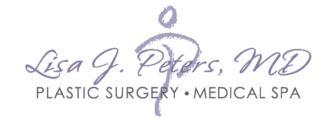As we age, it’s common to notice changes in the appearance of our face. One of the most common changes that bothers many patients are the formation of jowls, also known as sagging skin along the jawline. Many patients develop jowls over time due to the effects of gravity, genetics, and a loss of skin elasticity. Luckily, there are a wide range of treatments available to treat this problem, from non-surgical to surgical treatments. We’ll explore some of the most effective ways to reduce sagging jowls below.
1. Dermal Fillers
Dermal fillers are able to restore volume to the cheeks and jawline, which can help to reduce the appearance of jowls. Filler can be injected along the jawline – behind the jowls and in front of the jowls – in order to create an appearance of a sharper jawline. There is a newly FDA-approved filler to treat the jawline called Juvederm Volux. This filler is approved to last up to 2 years and offers better jawline correction compared to other fillers on the market.

2. Kybella
Kybella is an injectable fat dissolver. A majority of the time it is used on-label under the chin in the submental area to reduce the appearance of a “double chin”. It can also be injected into the jowls themselves, but this approach is off-label. The biggest downside to Kybella is the amount of swelling post-procedure which can last 1-2 weeks.
3. Skin Tightening Devices
There are several skin tightening treatments available to help reduce the appearance of jowls. These treatments work by heating the skin to stimulate collagen production, which helps to tighten and firm the skin. Some options include ultrasound and radiofrequency (RF) treatments such as Thermage, Ultherapy and Morpheus 8.
Our practice offers Renuvion, which is a device that uses helium plasma energy and radiofrequency energy to contract tissue and smooth the skin after liposuction. This device can improve any skin laxity of the jawline and neck that can occur after liposuction.

4. Facelift
A facelift is surgical procedure that can help tighten and lift sagging skin on the face and neck, including jowls. This is a more invasive option but it can provide longer lasting results. Some patients are better surgical candidates than others, and it is important to consult with a board-certified Plastic Surgeon if you are the right candidate.
If you are unsure which treatment is right for you, we recommend scheduling a consult to speak with one of our aesthetic providers to receive a personalized treatment plan that fits your goals.



